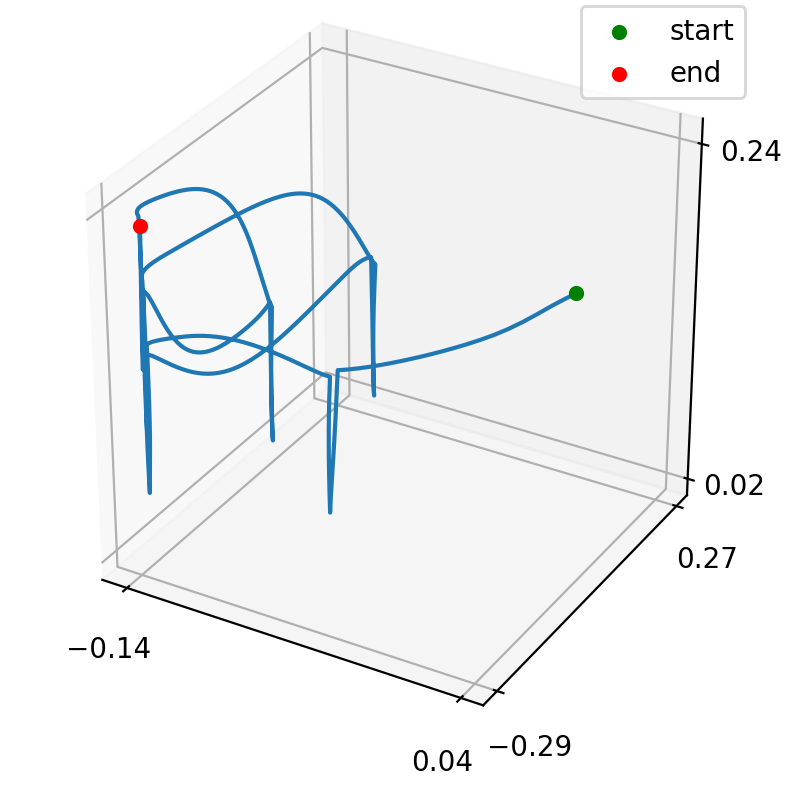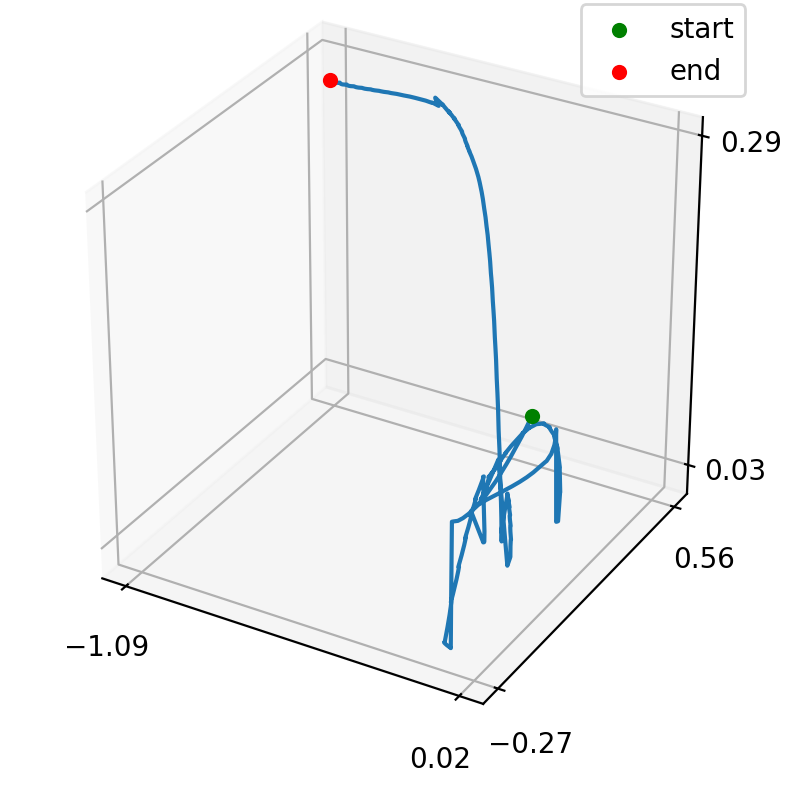Architecture

The user provides a task in natural language l, which then gets translated into a series of steps (TP) and objective and constraints (OD) via two layered blocks of a language model in the language module. The objective and constraints c, h, g are then used as inputs to the control module, which generates a trajectory via MPC (TG) and the low-level control commands (TT) to be applied to the system, in this case, a robotic arm.
End Effector Trajectories in Cubes Stacking
We compare NARRATE against Code as Policies, and VoxPoser. We find that defining the constrained MPC program leads to the most efficient execution of contact-rich tasks (where the cm-level trajectories of the gripper fingers matters for collision avoidance). In the figures, we show an example of the end effector trajectories for the task of stacking cubes using the three methods.

Ours

Code as Policies

VoxPoser
Human Feedback at Runtime
NARRATE defines each sub-task in natural language. This allows for seamless human intervention in case the subtasks are incorrect. We show that being able to intervene with feedback (on both 1 sub-task, or for every sub-task of the plan) increases the success rate.

Human-Robot chat interface
The relatively low inference time required by LLMs and the real-time properties of the MPC regime allow humans to interactively collarborative with NARRATE via an intuitive chat interface.
Prompts
All the prompts are the same in simulation and real-world deployment:
Task Planner |
Optimization Designer |
Task Planner (Collaborative) |
Optimization Designer (Collaborative)
BibTeX
@misc{ismail2024narrate,
title={NARRATE: Versatile Language Architecture for Optimal Control in Robotics},
author={Seif Ismail and Antonio Arbues and Ryan Cotterell and René Zurbrügg and Carmen Amo Alonso},
year={2024},
eprint={2403.10762},
archivePrefix={arXiv},
primaryClass={cs.RO}
}